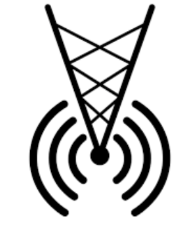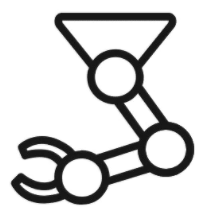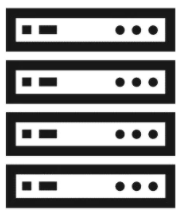This paper investigates the application of physical-layer network coding (PNC) to Industrial Internet-of-Things (IIoT) where a controller and a robot are out of each other's transmission range, and they exchange messages with the assistance of a relay. We particularly focus on a scenario where the controller has more transmitted information, and the channel of the controller is stronger than that of the robot. To reduce the communication latency, we propose an asymmetric transmission scheme where the controller and robot transmit different amount of information in the uplink of PNC simultaneously. To achieve this, the controller chooses a higher order modulation. In addition, the both users apply channel codes to guarantee the reliability. A problem is a superimposed symbol at the relay contains different amount of source information from the two end users. It is thus hard for the relay to deduce meaningful network-coded messages by applying the current PNC decoding techniques which require the end users to transmit the same amount of information. To solve this problem, we propose a lattice-based scheme where the two users encode-and-modulate their information in lattices with different lattice construction levels. Our design is versatile on that the two end users can freely choose their modulation orders based on their channel power, and the design is applicable for arbitrary channel codes.
翻译:本文调查物理层网络编码( PNC) 应用于工业互联网( IIoT) 的应用程序, 其中控制器和机器人在彼此的传输范围之外, 并在中继的协助下交换信息。 我们尤其关注控制器拥有更多传输信息的情况, 控制器的频道比机器人的频道更强。 为了减少通信延迟度, 我们提议了一个不对称传输方案, 控制器和机器人同时在 PNC 的上链接中传输不同数量的信息。 为了实现这一目标, 控制器选择了一个更高的命令调控。 此外, 两个用户都应用频道代码来保证可靠性。 转发器上的问题是一个超级发送的符号, 包含来自两个终端用户的不同源信息量。 因此, 转发器很难通过应用当前的 PNC 解码技术来推断有意义的网络编码信息。 这需要终端用户同时传输同样数量的信息。 为了解决这个问题, 我们提议了一个基于 Lattice 的方案, 使两个用户在 lattico- 上输入他们的信息的端端端调的用户可以选择基于不同版本的系统设计系统设计, 我们的系统设计是可任意设计的系统。







































